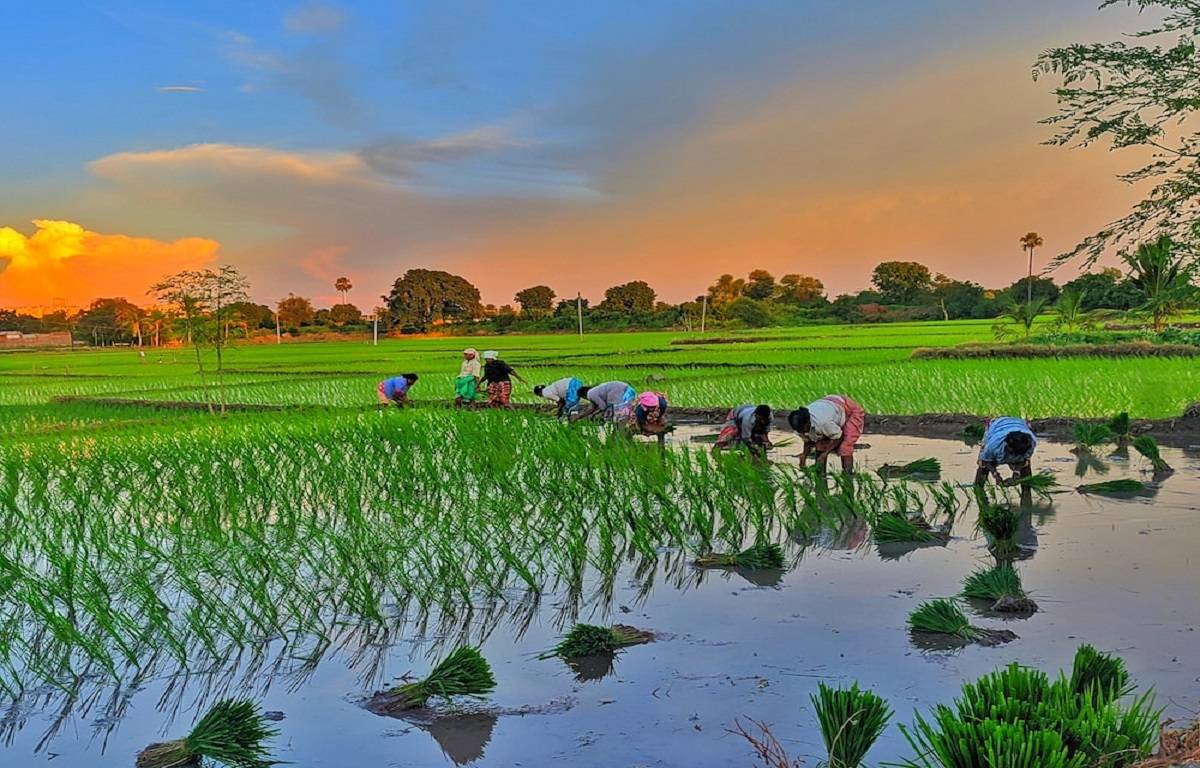
Nellore farmers are not keen on cultivating paddy and the area of cultivation has been decreasing greatly; despite the ample availability of water in the district. The absence of a Minimum Support Price is one of the main reasons farmers have stopped cultivating the crop.
Paddy prices are lower in other states in comparison to the Nellore district. The local millers have also lost their interest in exports and are only pursuing nominal procurement.
5 lakh hectares in the district are under paddy cultivation. The area of cultivation has decreased from 1 Lakh to 1.5 lakh hectares. Paddy cultivation also covered 97% of the area in 2013-14 and 1.92 hectares out of the normal area out of the total 1.98 lakh hectares in the district.
In reality, out of the district's usual size of 1.98 lakh hectares, 1.92 lakh hectares were under paddy cultivation in 2013–14. The situation was also favorable in 2014–15, when 1.78 lakh hectares, or 90% of the total 1.98 lakh hectares, were planted in paddy crops. Around 2.90 lakh hectares of paddy were grown in 2015, which was above the average amount, 1.50 lakh hectares in 2016, and 1.08 lakh hectares in 2017.
The officials had promised enough water for 2-3 lakh acres of the second crop. Cultivation in 2022 stood at 50,000-60,000 acres against the expected acreage.
The situation was fueled by the fear of losses and now most of the farmers choose to keep their lands barren even when the district administration has assured 2-3 lakh acres for the late Kharif season.
About 2 lakh hectares of paddy cultivation were started during rabi. Currently, farmers no longer cultivate paddy outside of the normal growing season, and the area has shrunk from 1 lakh acres to 60,000 acres. Due to a decline in per capita rice consumption and a preference for millets and other low-carbohydrate cereals, this region is likewise steadily shrinking.
Despite the fact that BPT varieties were well received by consumers in the State, scientists created NLR 145 (Swarnamukhi), MT 1001, MT 1010, NLR 30491 (Bharani), NLR 33358 (Somasila), NLR 34449 (Nellore Mahsuri), and NLR 40024 (Swetha) for local requirements because they are more suited to the region's conditions.
The state government came up with a solution by announcing the supply of quality rice to the ration cardholders through PDS in order to promote the cultivation of the Nellore Masuri variety again. Moreover, the demand for the slender NLR 34449 paddy variety has increased significantly. The district’s average paddy stock stands at 10-15 lakh MTs per annum.
"In the past, people in rural areas only consumed millets; but, when rice became more readily available during the 1980s, rice consumption grew. Due to the lack of demand for rice, the government is also spending money to store inventories in warehouses, and those stocks are also deteriorating.
Despite the fact that we created enhanced paddy varieties to take into account farmer challenges, millets are preferred by consumers, and the government is also pushing alternative crops "explained retired scientist Dr. P. Ramesh Babu from Acharya Ranga Agricultural University.
CSR Confederation of Indian Farmers Associations State President Koti Reddy stated, "Irrigation Advisory Board assured water for 2-3 lakh acres, but farmers are not interested in starting to sow. There is no shortage of seeds or other inputs, and water is plentiful. They are concerned, though, about receiving MSP for their produce.”
He continued, "Millers buy 1,100–1,200 kg from the farmers for 850 kg of putty, and the farmers lose Rs. 3,000–4,000 per putty." As a result, a number of reasons have caused the district's cultivating area to gradually decline.
According to farmer AV Ramanaiah Naidu of Indukurpet Mandal, farmers experienced significant losses the previous season. According to him, the government only purchased 3 lakh MT of the 15 lakh MT of paddy that was scheduled last year through RBKs.
According to him, millers who were willing to pay between Rs. 11,000 and Rs. 13,000 per putty instead of the MSP of Rs. 16,600 plus bought the remaining inventories. The availability of supplies at a reasonable price in other surrounding states, according to millers, makes exporting rice to other nations and providing MSP to farmers expensive.
















